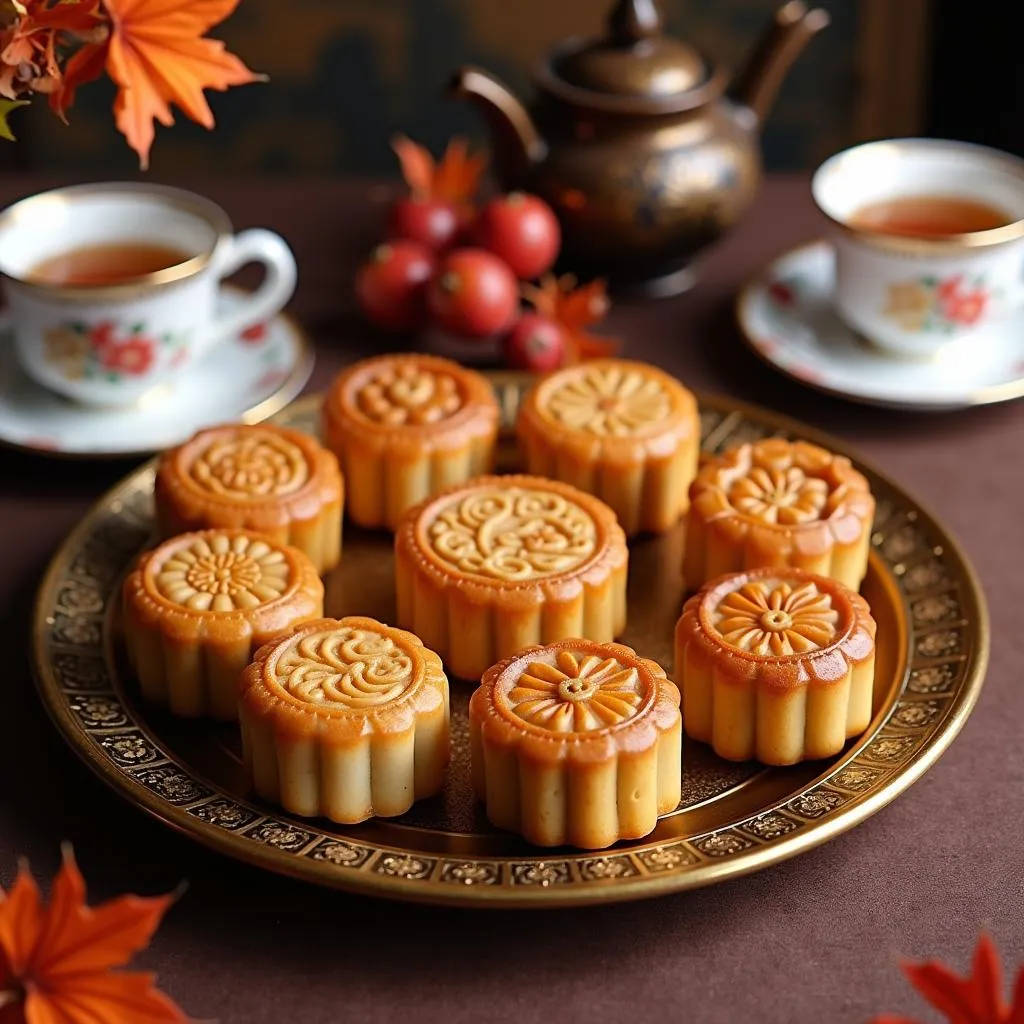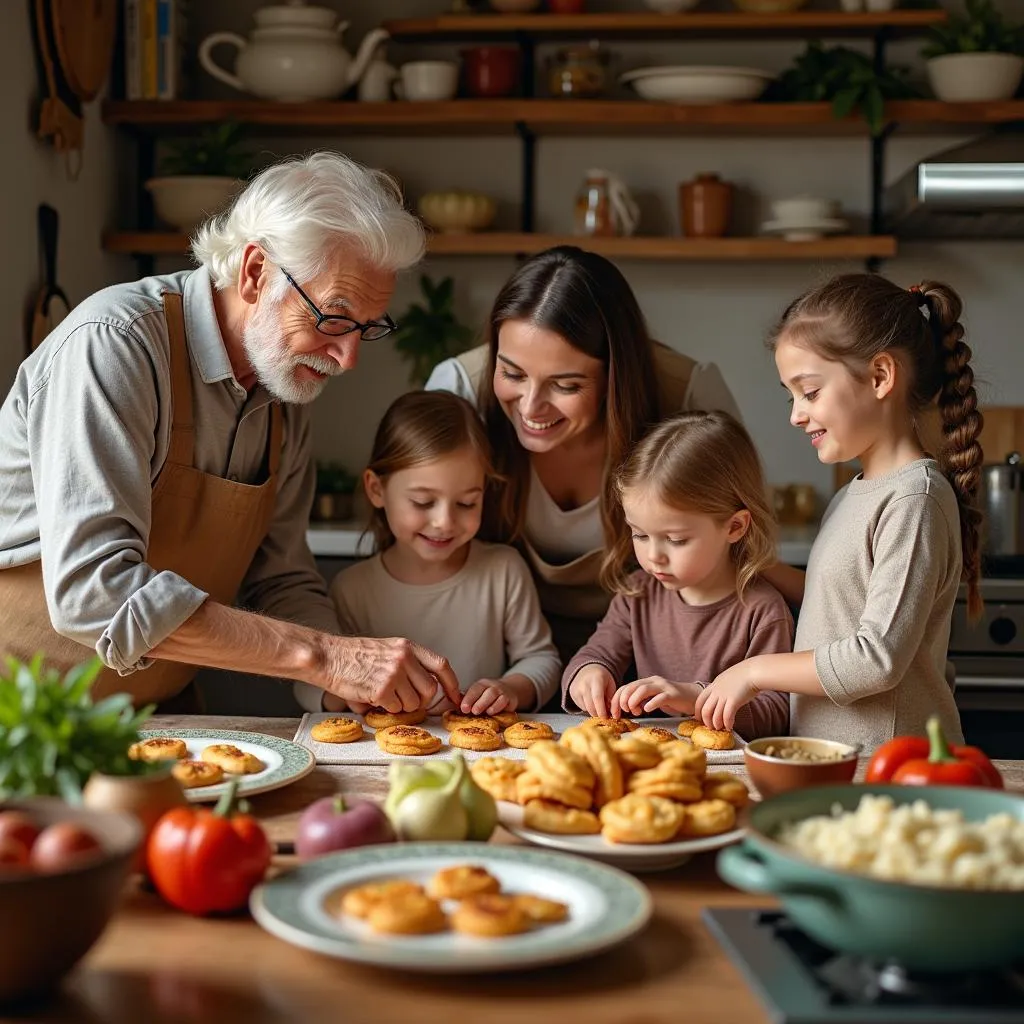Cultural festivals and traditional dishes are common topics in IELTS Speaking exams, particularly in Part 2 and Part 3. Being able to describe a traditional dish you enjoy during a cultural festival can demonstrate your language skills, cultural awareness, and ability to provide detailed descriptions. This topic has appeared frequently in past IELTS exams and is likely to continue being relevant in future tests.
Part 1: Introduction and Interview
In Part 1, the examiner may ask you some general questions about food and festivals. Here’s an example question with a suggested answer:
Examiner: Do you enjoy cooking traditional dishes?
Sample answer (Band 7-8):
“Absolutely! I find cooking traditional dishes to be a fascinating way to connect with my cultural heritage. It’s not just about the flavors, but also about preserving family recipes and understanding the history behind each dish. For instance, I particularly enjoy preparing a special rice cake that’s been passed down through generations in my family. The process of making it is quite intricate, involving several steps and specific ingredients, but the end result is always worth the effort.”
Describe a famous dish in your country to further showcase your ability to discuss traditional cuisine in detail.
Part 2: Long Turn
Here’s a sample cue card related to describing a traditional dish during a cultural festival:
Describe a traditional dish you enjoy during a cultural festival
You should say:
- What the dish is
- When you usually eat it
- How it is prepared
- And explain why you enjoy this dish during the festival
Sample answer (Band 7-8):
“I’d like to talk about a traditional dish called ‘mooncakes’ that I thoroughly enjoy during the Mid-Autumn Festival, which is a significant cultural celebration in many Asian countries.
Mooncakes are round pastries typically filled with sweet lotus seed paste and may contain salted egg yolks. They’re usually about the size of your palm and have intricate designs pressed onto the top. We traditionally eat these delectable treats during the Mid-Autumn Festival, which falls on the 15th day of the eighth month in the lunar calendar, usually in September or early October.
The preparation of mooncakes is quite elaborate. The process begins with making the dough, which is a mixture of flour, golden syrup, alkaline water, and oil. The filling is prepared separately, often using lotus seed paste, although there are many variations. The dough is then carefully wrapped around the filling, pressed into molds with beautiful designs, and baked until golden brown.
I particularly enjoy this dish during the festival because it embodies the spirit of family reunion and cultural tradition. The round shape of the mooncakes symbolizes completeness and unity in Chinese culture, which aligns perfectly with the festival’s theme of family gatherings. Moreover, the act of sharing mooncakes with family and friends fosters a sense of community and connection. The rich flavor and intricate designs also make eating mooncakes a multi-sensory experience that I look forward to each year.
The tradition of eating mooncakes during this festival dates back centuries, and I find it deeply meaningful to participate in a custom that has been practiced by countless generations before me. It’s a delicious way to honor our cultural heritage and create lasting memories with loved ones.”
 Traditional mooncakes for Mid-Autumn Festival
Traditional mooncakes for Mid-Autumn Festival
Follow-up questions:
- How has the way of making this dish changed over time?
- Do young people in your country enjoy traditional foods as much as older generations?
Sample answers:
-
(Band 7-8) “The fundamental recipe for mooncakes has remained relatively consistent over the centuries, but there have been some notable changes in recent years. Contemporary bakers have begun experimenting with innovative flavors and fillings, such as chocolate, ice cream, or even savory options like ham and nuts. Additionally, the production process has become more mechanized in large-scale bakeries, although many still prefer handmade mooncakes for their artisanal quality. Despite these changes, the core tradition and symbolism of mooncakes remain intact, preserving the cultural significance of this beloved festival food.”
-
(Band 8-9) “It’s an intriguing question with a nuanced answer. While there’s undoubtedly a generational shift in food preferences, I’ve observed that many young people still hold traditional foods in high regard, especially during cultural festivals. However, their approach is often different from older generations. Young people tend to seek out modern interpretations of traditional dishes, appreciating fusion cuisines that blend traditional elements with contemporary flavors. This culinary evolution reflects a broader trend of young people embracing their cultural heritage while adapting it to modern lifestyles. Moreover, social media has played a significant role in rekindling interest in traditional foods among youth, as sharing photos of beautifully presented traditional dishes has become a popular way to celebrate one’s cultural identity online.”
Part 3: Two-way Discussion
Examiner: How do traditional dishes contribute to a country’s cultural identity?
Sample answer (Band 8-9):
“Traditional dishes play a pivotal role in shaping and preserving a country’s cultural identity. They serve as a tangible link to a nation’s history, often reflecting the geography, climate, and historical influences that have shaped the culture over centuries. These dishes encapsulate stories, rituals, and values that are passed down through generations, acting as a form of edible heritage.
Moreover, traditional cuisine often becomes a source of national pride and a way for people to connect with their roots, especially in an increasingly globalized world. It can be a powerful tool for cultural diplomacy, allowing countries to share their heritage with others through food festivals, cultural exchanges, and international cuisine.
Interestingly, as cultures evolve, so do their traditional dishes, adapting to new ingredients and techniques while maintaining their core essence. This evolution mirrors the dynamic nature of cultural identity itself, demonstrating how traditions can remain relevant and vibrant in changing times.
Furthermore, the rituals and customs associated with preparing and sharing traditional meals often reinforce social bonds and community values. For instance, the tradition of making mooncakes during the Mid-Autumn Festival not only preserves a culinary technique but also reaffirms the importance of family reunions and gratitude in Chinese culture.
In essence, traditional dishes are not just about sustenance; they are repositories of cultural memory and identity, serving as a delicious reminder of who we are and where we come from.”
Describe a holiday celebration you enjoy to further explore the connection between food and cultural festivities.
Key Vocabulary and Phrases for High Scores
-
Culinary heritage /ˈkʌlɪnəri ˈherɪtɪdʒ/ (noun phrase): The traditional dishes and cooking methods of a particular culture or region.
Example: “Mooncakes are an important part of China’s rich culinary heritage.” -
Gastronomic tradition /ˌgæstrəˈnɒmɪk trəˈdɪʃn/ (noun phrase): The customs and practices related to the preparation and consumption of food in a specific culture.
Example: “The Mid-Autumn Festival represents a significant gastronomic tradition in many Asian countries.” -
To embody /ɪmˈbɒdi/ (verb): To represent or express an idea, quality, or feeling in a clear and obvious way.
Example: “This dish embodies the spirit of our harvest celebrations.” -
Intricate /ˈɪntrɪkət/ (adjective): Very complicated or detailed.
Example: “The mooncakes feature intricate designs pressed onto their surface.” -
To foster /ˈfɒstə(r)/ (verb): To encourage or promote the development of something.
Example: “Sharing traditional foods fosters a sense of community and cultural pride.”
 Traditional food preparation with family
Traditional food preparation with family
Tips from an IELTS Speaking Examiner
-
Practice describing dishes in detail: Focus on appearance, taste, texture, and aroma. Use vivid adjectives to make your description come alive.
-
Develop your cultural knowledge: Understand the history and significance of traditional dishes in your culture. This will help you provide more insightful answers.
-
Use a range of vocabulary: Incorporate less common words and phrases related to food and culture to demonstrate your language proficiency.
-
Structure your answers: Use discourse markers to organize your thoughts clearly, especially in Part 2 long-turn responses.
-
Connect personal experiences: Relate the dish to your own memories or family traditions to make your answer more engaging and authentic.
-
Be prepared to discuss broader topics: In Part 3, be ready to talk about cultural changes, globalization’s impact on traditional foods, and the role of food in society.
-
Practice fluency: Aim to speak smoothly without long pauses. Regular practice with a variety of food-related topics can help improve your fluency.
Remember, the key to success in IELTS Speaking is not just about knowing the right words, but using them effectively to express your thoughts and experiences. Describe a favorite dish you like to cook to practice applying these tips in a different context.
By following these guidelines and practicing regularly, you’ll be well-prepared to discuss traditional dishes and cultural festivals in your IELTS Speaking test, potentially boosting your score significantly.


